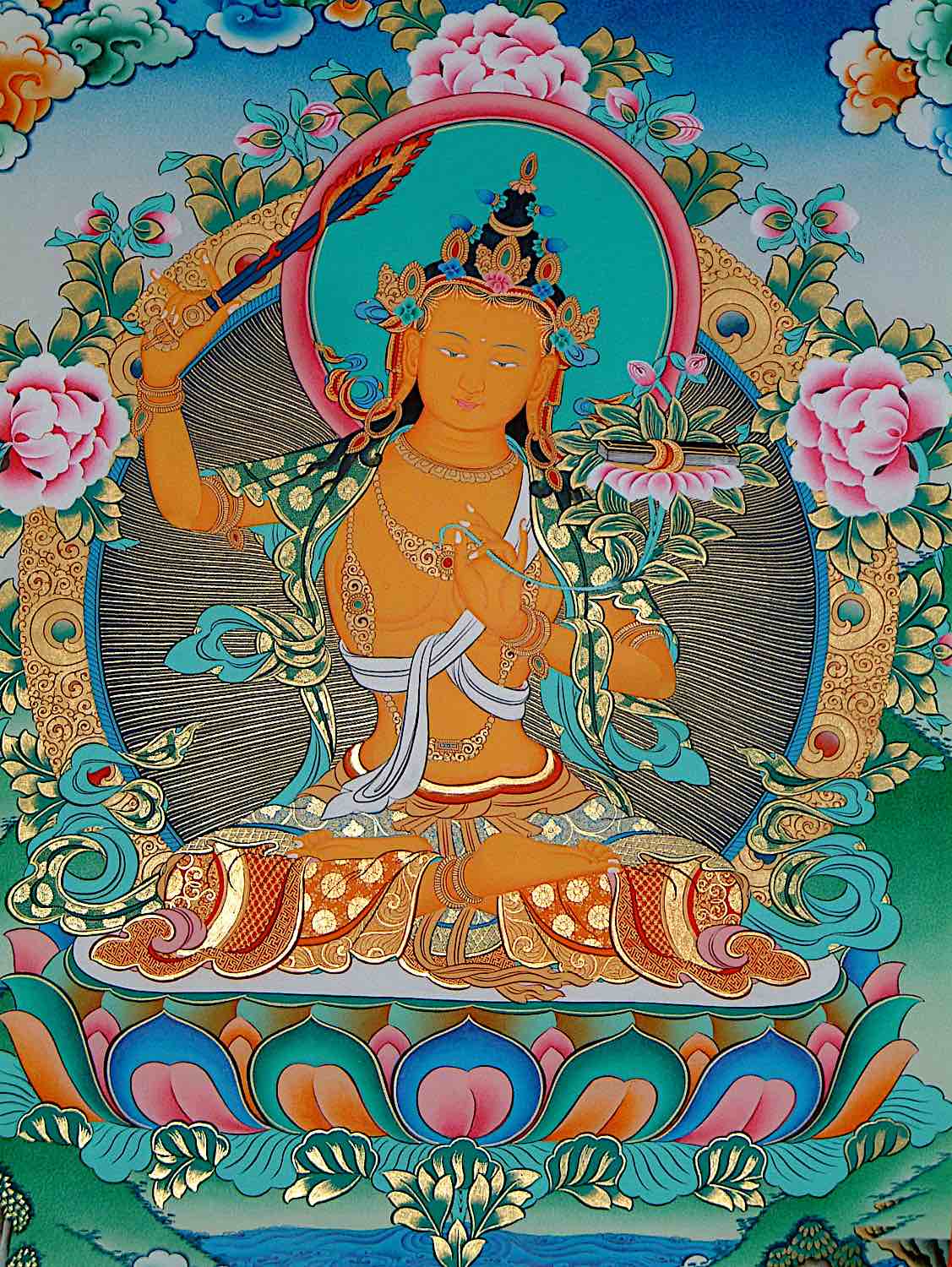The Tenma Goddesses are the Twelve Guardian Deities
The word oracle is an ancient Greek word that can be found in the Oxford dictionaries, and the simple definition means "a priest or priestess acting as a medium through whom advice or prophecy was sought from the gods in classical antiquity."
In the Tibetan tradition, the word oracle is used for a spirit that enters those men and women who act as mediums between the natural and spiritual realms. The mediums are, therefore, known as kuten, which literally means "the physical basis."
According to Tibetan tradition, Guru Rinpoche said Padmasambhava was born on a lotus in a Dhanakosha Lake on the tenth day of the monkey (fifth) month in the Year of the Monkey.
When Guru Rinpoche, Padmasambhava, consecrated Samye Monastery with the Vajrakilaya dance, he tamed the local spirit protector, Pehar Gyalp, and bound him by oath to become the head of the entire hierarchy of Buddhist protective spirits. Pehar, later known as Dorje Drakden, became the principal protector of His Holiness The Dalai Lama, manifesting through the Nechung Oracle.
The Communist Chinese invasion of Tibet in 1959. After years of guerrilla war between Tibetan rebels and Chinese soldiers in a land that China considered to be its territory, thousands of protesters surrounded the Dalai Lama’s palace in Lhasa to keep His Holiness from being abducted, arrested, or assassinated.
Over the following days, the State of the Oracle, the Dalai Lama’s advisor, urged him to flee. The Tibetan government-in-exile reports, variously, 87,000 deaths for Tibetans, and this included the monks and nuns during the rebellion.
According to the Dalai Lama, "Tibetans rely on oracles for various reasons. The purpose of the oracles is not just to foretell the future. They are called upon as protectors and sometimes used as healers. However, their primary function is to protect the Buddha Dharma and its practitioners.
Who is the female oracle of Tibet? Her title is Rangjung Neljorma self-arisen dakini. She is also the state oracle of Tsering Chenga, the goddess protector of Tibet. The female Khadro-la, Khadro-la is the State Medium of the Tenma Oracle (The Tenma Goddesses are the Twelve Guardian Deities of Tibetan Buddhism).
What does Khandro mean in Tibetan?
The Tibetan term 'Khandro' literally means 'sky-goer', indicating one who traverses the 'sky' of the expanse of wisdom. The masculine form of the word is Daka, which is usually translated into Tibetan as pawo "hero".
What is the state Oracle of Khadro La in Tibet?
Khadro-la is the State Medium of the Tenma Oracle. The Tenma Goddesses are the Twelve Guardian Deities of Tibetan Buddhism. In Dharamsala, India, there is a Tenma oracle, consulted and honoured by HH Dalai Lama, for which this young Tibetan woman is the kuten, which literally means "the physical basis".
What does Khandro mean in Buddhism?
Dakini in Sanskrit, Khandro in Tibetan, literally means "sky dweller, or "sky dancer," and is the most sacred aspect of the feminine principle in Tibetan Buddhism, embodying both humanity and divinity in feminine form.
Tibet takes a special position in the world in certain respects: even nowadays the Tibetan Government employs an oracle and it regularly consults him on governmental, political issues as well as on personal matters concerning the Dalai Lama.
The phenomenon of oracles remains an important part of the Tibetan way of life. Tibetans rely on oracles for various reasons. The purpose of the oracles is not just to foretell the future. They are called upon as wisdom protectors and sometimes used as healers. However, their primary function is to protect the Buddha Dharma and its practitioners.

Donations for our Buddhist research and development
Do you earnestly cherish our devoted work? Assuming this is the case, we are delighted that you are finding our blog useful and valuable. Would you consider making a donation for our Buddhist research and development?
We need your help to secure the future of scholarly interaction with Buddhism. Since our very first publication of Dharma works and activities in 2008, we have been effortlessly providing free distribution of Dharma posts and articles throughout the previous 14 years. We have exceptionally constrained support and do not receive subsidies or funding from people in general.
Please help us develop our Dharma activities that will not only benefit you but all Dharma readers on the planet. Please consider showing your support. Your generosity will certainly help us enhance our work and accomplish more for a better and brighter future.
Thank you for reading. May you find peace and great bliss. With your support, it helps to spread the Buddha’s precious teachings and turn the Dharma wheels in the world.
Aspiration For Bodhichitta
For those in whom the precious Bodhichitta has not arisen
May it arise and not decrease.
But increase further and further.
Dedication of Merit
By this merit, may we then obtain omniscience then.
Having defeated the enemies wrongdoings
May we liberate migratory from the ocean of existence.
With its stormy waves of birth, old age, sickness, and death.
*Note
I do not own or infringe any copyright on the picture(s).
Picture(s) courtesy and credit to the rightful distributors and/or studios
The picture(s) are intended for editorial use only.





































